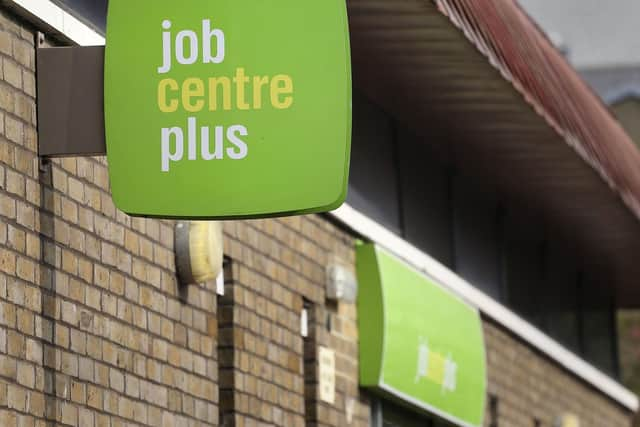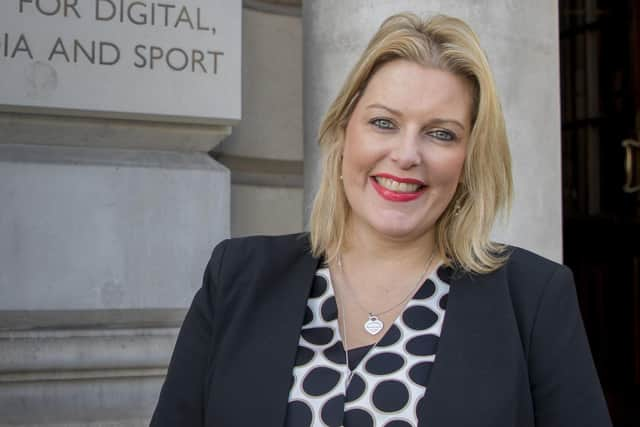Unemployment starts to fall as more businesses open up following coronavirus restrictions
and live on Freeview channel 276
The Office for National Statistics said the number of payroll workers rose by 97,000 between March and April, while it added that job vacancies also continued to increase as the economy jumped back into life.
The latest figures show that the overall rate of unemployment fell once more, to 4.8 per cent in January to March – the largest quarterly decrease since September to November 2015.
Advertisement
Hide AdAdvertisement
Hide AdBut the data also showed the toll taken by the crisis on the jobs market, with 772,000 fewer UK workers on payrolls than before the pandemic struck last spring.


The number of Lancashire people having to claim work related benefits, such as Universal Credit and Job Seekers Allowance, either through having no work, not enough hours, or low pay, was marginally up on April last year when most businesses were closed.
In Blackpool South, which had the highest percentage in the region, there were 6,440 people claiming, 13.1 per cent of the population, up 1.1 per cent on April last year.
Blackpool North and Cleveleys had 4,530 claimants, 9.2 per cent of the population, a figure up 0.6 per cent on last year.
Advertisement
Hide AdAdvertisement
Hide AdPreston had 5,460 claimants, 8.4 per cent of the population , up 1.4 per cent on last year.


Chorley had 2,985 claimants, 4.6 per cent of the population, up 0.2 per cent, while Fylde had 2,450, 5 per cent of the population, up 0.2 per cent.
Lancaster and Fleetwood had 3,055 claiming, 5 per cent of the population, up 0.5 per cent, Ribble Valley had 2,110 claiming, 3.4 per cent, up 0.1 per cent, South Ribble had 2,200 claiming, 3.7 per cent, up 0.1 per cent and Wyre and Preston North had 1,760 claiming, 3.3 per cent of the population, a figure up by 0.2 per cent on last April.
Darren Morgan, director of economic statistics at the ONS, said: “The number of employees on payroll rose strongly in April as the economy began to reopen, continuing the improvement from its November trough.
Advertisement
Hide AdAdvertisement
Hide Ad“There remains, however, three quarters of a million people fewer on the payroll compared with the pre-pandemic peak.
“With many businesses reopening, the recent recovery in job vacancies continued into April, especially in sectors such as hospitality and entertainment.
“The renewed lockdown at the beginning of 2021 saw a sharp rise in the number of previously unemployed people no longer looking for work, helping the unemployment rate to fall on the quarter. This mirrored what happened during the first lockdown.”
Suren Thiru, head of economics at the British Chamber of Commerce, said: “The decline in the unemployment rate and the rise in payroll employment is further confirmation that the UK jobs market is now more resilient to the ongoing restrictions. UK unemployment remains on track to peak at a much lower level than in recent recessions.
Advertisement
Hide AdAdvertisement
Hide Ad“However, the squeeze on business cash flow from any marked delay to the planned full reopening of the economy may trigger renewed job losses, particularly when furlough becomes less generous over the summer.”
Employment minister Mims Davies said: “While there is more to do to make sure we support jobseekers over the coming months, these figures highlight the resilience of our jobs market and ability for employers to adapt – and through our Plan for Jobs we’re continuing to create new opportunities for people right across the country.”
See also: The jobs divide at either end of the M55 shows Preston faring better than Blackpool amid lockdownBlackpool Gazette: Thanks for reading. If you value what we do and are able to support us, a digital subscription is just £1 for your first month. Try us today by clicking here